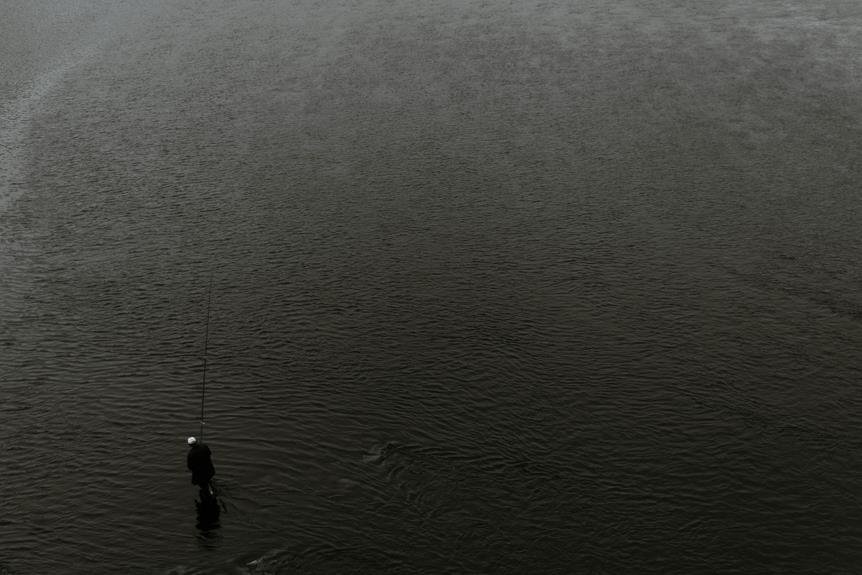Tight loop and open loop are two fundamental fly casting styles that optimize casting performance and adapt to diverse fishing conditions. Understanding the underlying principles of these styles enables anglers to refine their casting skills and adapt to various fishing scenarios. Tight loop casting provides enhanced accuracy and precision, making it effective in windy conditions, while open loop casting is suitable for presenting large or weighted flies. By mastering both styles, anglers can improve their casting performance and increase their chances of success. As you explore the nuances of tight loop and open loop casting, discover how to harness their power to tackle challenging fishing situations.
Key Takeaways
- Tight loop casting provides enhanced accuracy and precision, ideal for presenting small or light flies in calm conditions.
- Open loop casting is effective for presenting large or weighted flies, especially in windy conditions, due to its ability to generate sufficient fly momentum.
- Mastering both tight loop and open loop casting styles enables anglers to adapt to diverse fishing conditions and optimize their casting performance.
- The key difference between tight loop and open loop casting lies in the rod tip's trajectory and the resulting loop shape and size.
- Understanding the underlying principles of tight loop and open loop casting helps anglers refine their casting skills and make informed decisions about when to employ each technique.
Understanding Fly Casting Styles
In the domain of fly fishing, mastering the nuances of tight loop and open loop fly casting styles is essential for anglers seeking to optimize their casting performance and adapt to diverse fishing conditions. Understanding the fundamental principles of fly casting basics is vital for developing proficiency in tight loop and open loop techniques. Casting fundamentals, such as rod angle, line speed, and loop control, are critical components of effective fly casting. By grasping the underlying principles of tight loop and open loop casting, anglers can refine their casting skills and adapt to various fishing scenarios. A solid foundation in fly casting basics enables anglers to make informed decisions about when to employ tight loop or open loop techniques, ultimately leading to improved casting performance and enhanced fishing experiences.
Open Loop Casting Techniques
When executing open loop casting techniques, anglers must carefully control the rod tip to produce a wide, convex path that effectively turns over heavy flies or weighted rigs for nymphing. This style of casting relies on precise Casting Dynamics to generate sufficient Fly Momentum, allowing the line to unfold smoothly and efficiently. To achieve this, anglers must master the art of controlling the rod tip's trajectory, ensuring a consistent and deliberate motion. By doing so, they can harness the power of open loop casting to present large or weighted flies with ease. With practice and patience, anglers can refine their open loop casting techniques to tackle even the most challenging fishing situations.
Tight Loop Casting Advantages
What specific advantages do tight loop casting techniques offer to fly fishermen in various fishing situations? Tight loop casting provides several benefits, including enhanced Casting Confidence and Fly Precision. By producing a narrow, almost straight line path with the rod tip, tight loop casting enables pinpoint accuracy when presenting flies. This style requires less energy to control, making it extremely efficient in windy conditions. The energy used in tight loop casting is mostly one-directional, producing high line speed. As a result, fly fishermen can achieve longer casts with less effort, resulting in increased Casting Confidence. Additionally, the precision and accuracy of tight loop casting allow for more precise fly placement, increasing the chances of a successful catch.
Fly Casting Line Control
Mastering fly casting line control is essential to achieving consistent and accurate casts, as it enables anglers to effectively manipulate the line's trajectory and presentation in various fishing situations. This control is vital in casting dynamics, as it influences the line's flow and overall performance. Effective line control allows anglers to:
- Adjust the line's trajectory to target specific fishing spots
- Control the line's speed and flow to achieve the desired presentation
- Manipulate the line's tension to set hooks and land fish
- Adapt to changing fishing conditions, such as wind or water currents
- Achieve a smooth, consistent casting motion, reducing fatigue and improving overall performance
The Importance of Fly Line Knots
In the intricate dance of fly casting, the often-overlooked yet essential aspect of fly line knots plays a pivotal role in maintaining a seamless energy transfer and a successful cast.
| Knot Characteristic | Effect on Cast |
|---|---|
| Knot Strength | A weak knot can lead to a failed cast, resulting in lost time and energy. |
| Line Memory | Excessive line memory can cause tangles and knots, affecting the cast's accuracy. |
| Knot Security | A secure knot guarantees a smooth energy transfer, resulting in a more accurate and efficient cast. |
| Knot Consistency | Consistent knot-tying techniques are vital for maintaining a consistent cast. |
A well-tied knot is vital in maintaining a smooth casting motion. Strong knots guarantee a seamless energy transfer, while weak knots can result in a failed cast. Line memory can also affect the cast's accuracy, making it essential to choose the right knot for the job.
Mastering the Casting Motion
Precise synchronization of the casting motion's distinct components is essential for achieving a seamless and efficient fly casting technique. To master the casting motion, it is vital to understand the intricate relationship between Casting Rhythm and Body Mechanics.
- A smooth, fluid motion is generated by the coordinated effort of the arms, legs, and core muscles.
- The casting motion's tempo is regulated by the angler's Casting Rhythm, which should be consistent and relaxed.
- Proper Body Mechanics facilitate that energy is efficiently transferred from the body to the rod, resulting in a precise and controlled cast.
- The angler's posture and balance play a vital role in maintaining a smooth casting motion.
- By mastering the casting motion, anglers can achieve greater accuracy, distance, and overall casting performance.
Choosing the Right Casting Style
As anglers develop their casting technique, they must also consider the specific casting style that best suits their fishing environment and goals, a decision that hinges on understanding the distinct characteristics of tight loop and open loop casting. When choosing a casting style, anglers should consider factors such as wind conditions, fly weight, and targeted species. The following table highlights key differences between tight loop and open loop casting styles:
| Casting Style | Energy Requirements | Wind Tolerance | Fly Weight |
|---|---|---|---|
| Tight Loop | Low | High | Light |
| Open Loop | High | Low | Heavy |
| Hybrid | Medium | Medium | Medium |
Effective Fly Fishing Strategies
Crafting an effective fly fishing strategy involves understanding the nuances of tight loop and open loop casting styles and adapting them to specific fishing environments and target species. By combining these casting styles with knowledge of fishing tactics and water conditions, anglers can optimize their fishing experience.
- Understand water conditions: Adapt your casting style to water currents, depths, and structures to increase your chances of catching fish.
- Choose the right fly: Select flies that match the target species' natural food sources and presentation styles.
- Read the water: Identify areas with high fish activity and adjust your casting strategy accordingly.
- Adjust to changing conditions: Be prepared to switch between tight loop and open loop casting styles as water conditions change.
- Practice and refine: Continuously practice and refine your casting technique to improve your overall fishing strategy.
Frequently Asked Questions
How Do I Maintain a Consistent Loop Size in Windy Conditions?
To maintain a consistent loop size in windy conditions, adopt a wide, stable casting stance, and focus on generating a smooth, controlled power application to overcome wind resistance, ensuring a precise and consistent loop formation.
Can I Use a Tight Loop Style for Nymphing or Is Open Loop Better?
When nymphing, consider the trade-off between Casting Confidence and Loop Dynamics; while a tight loop style can provide accuracy, an open loop may be more suitable for presenting weighted rigs, especially in windy conditions.
Are There Any Specific Rod Materials Suited for Tight Loop Casting?
When seeking precision and accuracy, graphite rods are ideal for tight loop casting, offering a responsive and sensitive feel. Alternatively, fiberglass options provide a slower, more deliberate action, suited for anglers preferring a more relaxed casting style.
How Often Should I Inspect and Replace My Fly Line Knots?
Regularly inspecting fly line knots for signs of wear, such as cracks or abrasion, is essential to maintaining knot strength, as weakened knots can lead to line breaks and compromised casting performance due to excessive line wear.
Can I Adapt My Casting Style to Accommodate Different Water Types?
When adapting casting style to accommodate different water types, consider River Currents and Water Clarity. In clear, slow-moving rivers, precise casts are possible, while in murky, fast-flowing waters, a more aggressive, energetic approach is required to overcome the environmental challenges.
Conclusion
In summary, the dichotomy between tight loop and open loop casting styles is a pivotal consideration in fly fishing, as each approach is tailored to specific environmental and tackle conditions. Mastery of these techniques is vital for peak performance, as the nuances of line control, energy expenditure, and knot integrity can make or break a fishing excursion. By grasping the intricacies of tight loop and open loop casting, anglers can orchestrate their fishing experience with precision and finesse, thereby maximizing their chances of success.









